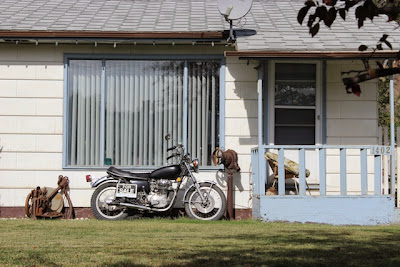BEAR 1
Just leaving the Cassiar Highway, we saw our first bear. A black bear. Who was busy eating dandelions.
It seems when bears come into town, they ignore the dandelions and go after other things. A shame.
So there's no doubt, here's a picture where he has the dandelions in his mouth. I'm sure they would have been tastier when they were fresher and hadn't gone to seed yet.
I did stay in the car. These photos result from a combination of the bear being close to the road, not concerned when I stopped, my Canon Rebel telephoto lens, and some cropping.
One more of bear 1, heading off.
BEAR 2
This black bear was mostly brown and we first saw him sitting in amongst the dandelions.
His reddish brown fur was a bit mangy.
BEAR 3
The next day, between Haines Junction and Kluane National Park, we saw the brown bear.
It too was at the side of the road eating dandelions. I stopped well before I got to the bear and was able to get a couple of shots when a big pickup pulling a huge trailer passed me slowly and stopped right next to the bear.
Thanks, I muttered, and thought some choice things about the driver as the bear turned to the brush and disappeared.
There must have been some discussion in the cab of the truck. At the visitor center at Kluane National Park the trailer pulled up just after we did and a woman got out and apologized for her husband chasing the bear away. The husband didn't get out. I imagine this woman might apologize for her husband a lot. I told her it was fine, I'd gotten my pictures.
Then we went for a short hike to the first viewpoint on the nearby trail the rangers suggested.
Kluane is a huge park and is a World Heritage site combined with several other US and Canadian parks.
The Kluane/Wrangell-St. Elias/Glacier Bay/Tatshenshini-Alsek national parks and protected areas along the boundary of Canada and the United States of America are the largest non-polar icefield in the world and contain examples of some of the world’s longest and most spectacular glaciers. Characterized by high mountains, icefields and glaciers, the property transitions from northern interior to coastal biogeoclimatic zones, resulting in high biodiversity with plant and animal communities ranging from marine, coastal forest, montane, sub-alpine and alpine tundra, all in various successional stages.It has a tiny, fairly primitive visitors center. So far, it hasn't been spoiled with an adjoining commercial cluster of hotels and restaurants and other encroachments on the wilderness. The hike was pretty much straight up, but the view was wonderful, the temperature delightful, and there were a number of birds and insects (besides mosquitoes). A visit to this national park is a visit back in time as well as space. This won't last too much longer I suspect.
Then, driving on, in the 30 mile no-man's land between the Canadian border station and the American border station, we saw this stock image of a moose in a lake in the wilderness. But I couldn't resist getting a picture.





















































